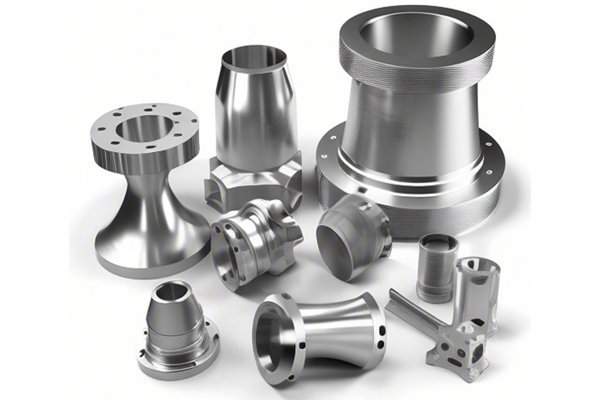: Did You Know?
Did you know that the efficiency of your CNC (Computer Numerical Control) machine can often hinge on the simple act of referring to the correct parts manual? According to recent studies, nearly 25% of CNC machine downtime stems from improper machine handling, which can often be traced back to a lack of understanding of the parts and functions as outlined in the user manuals. This statistic not only highlights the significance of familiarity with machine components but also emphasizes the critical role that parts manuals play in optimizing performance.
In the complex world of CNC machining, understanding your equipment is essential for maintaining flow and ensuring precision. Whether you’re a seasoned machinist or a newcomer to the industry, having access to the Central Machinery Lathe Parts Manual is vital for you to maximize your machine’s potential. In this blog post, we will delve into the significance of using the Central Machinery Lathe Parts Manual, its various components, troubleshooting techniques, and how proper knowledge can lead to improved CNC efficiency.
The Anatomy of CNC Machines
Before we get into the specifics of the Central Machinery Lathe Parts Manual, let’s first take a step back and understand what CNC machines are and how they function. CNC machines utilize computer-generated designs to carry out tasks like cutting, grinding, milling, and drilling. The precision and efficiency of these machines often depend on a deep understanding of their components.
Key Components of CNC Lathes
Each of these components plays a role in achieving precision and efficiency, and understanding their functions is critical in maximizing your CNC machining projects.
Understanding the Central Machinery Lathe Parts Manual
The Value of the Manual
The Central Machinery Lathe Parts Manual provides an exhaustive reference to the inner workings of your CNC lathe. Containing exploded diagrams, part lists, assembly instructions, maintenance tips, and troubleshooting guidelines, it serves as your ultimate guide. Understanding how to leverage the information in the manual can lead to a significant uptick in efficiency.
Key Sections of the Manual
The Role of the Parts Manual in CNC Efficiency
The Central Machinery Lathe Parts Manual serves as a treasure trove of information, enabling your team to:
Practical Use Cases: Improving Efficiency with the Manual
To understand the manual’s importance better, let’s explore some practical scenarios:
Case Study 1: Downtime Reduction
Imagine a scenario where a machinist encounters an unexpected noise coming from the lathe. Without the parts manual, they may begin a lengthy trial-and-error process to locate the issue. However, referring to the troubleshooting section allows them to quickly ascertain that the problem lies within the spindle bearings.
By having clear instructions on replacing these parts, the machinist can promptly fix the issue, significantly reducing machine downtime.
Case Study 2: Accurate Replacements
During routine maintenance, a lathe operator discovers worn-out components. Without the parts manual, they risk ordering incorrect replacements. The parts list, however, provides the specific part numbers needed for ordering. This simple action accelerates repairs and prevents additional downtime.
Case Study 3: New Employee Training
Training new employees can be a challenge in any machining environment. By utilizing the manual, companies can ensure that all team members have a uniform understanding of machine parts and functions. The introduction section can be used as a foundational training tool, allowing new hires to familiarize themselves with the CNC lathe immediately.
Maintenance Techniques for Longevity
Now that we’ve established the importance of the Central Machinery Lathe Parts Manual, it’s crucial to discuss how proper maintenance can be achieved through its guidance:
Routine Checks
Conducting regular inspections of the lathe is essential. The maintenance section of the manual outlines key areas to check:
Cleaning and Lubrication

Regular cleaning and lubrication can prevent many common issues. The manual provides specific instructions on cleaning methods and recommended lubricants. Following these guidelines not only enhances performance but extends the machine’s lifespan.
Calibration
Calibration is critical to ensure precision in CNC operations. The manual may include steps for calibrating the machine, ensuring that all components work in sync. Accurately calibrated machines result in better quality parts and reduced waste.
Troubleshooting Common Issues
Even with the best maintenance practices, issues can arise. Here are a few common problems identified in the manual along with their solutions:
Problem 1: Inconsistent Machining
Symptoms: Varying dimensions on machined parts.
Possible Solutions:
Problem 2: Motor Failure
Symptoms: The machine doesn’t turn on or the motor runs erratically.
Possible Solutions:
Problem 3: Excessive Vibration
Symptoms: Unusual sounds or vibration during operation.
Possible Solutions:
Training Your Team to Use the Manual Effectively
Maximizing CNC efficiency isn’t just about knowing the machine; it’s also about ensuring that your team knows how to make the most of the resources available. Here are some tips for training your team effectively:
Workshops and Hands-On Training
Hosting workshops that focus on the manual can empower your team. Include hands-on sessions where employees get to identify parts and problems using the manual.
Create Reference Guides
Consider summarizing complex sections of the manual into quick-reference guides that can be easily accessed in the workshop.
Encourage Questions
Creating an environment where employees feel comfortable asking questions about the manual encourages learning and promotes a culture of continuous improvement.
Leveraging Technology: Digital Manuals and Tools
In today’s digital world, many companies are transitioning from printed manuals to digital versions. These digital manuals often come with enhanced features:
Summary of Core Techniques
As we conclude our exploration of the Central Machinery Lathe Parts Manual and its impact on CNC efficiency, here’s a summary of the vital techniques covered:
: Why This Blog Is Important
The significance of understanding and utilizing the Central Machinery Lathe Parts Manual cannot be overstated. When properly leveraged, this manual can lead to improved operational efficiency, reduced downtime, and higher-quality output in CNC machining.
As the CNC industry continues to grow and evolve, understanding the intricacies of your machines—including parts and maintenance—is paramount. The benefits outlined in this blog, including more streamlined operations and empowered employees, make addressing this topic crucial for any manufacturing entity aiming for excellence.
Remember, the journey toward efficient CNC operations begins with knowledge and understanding—and the Central Machinery Lathe Parts Manual is your first step in that journey. Embrace the information it provides; it could mean the difference between a successful project and costly delays.






